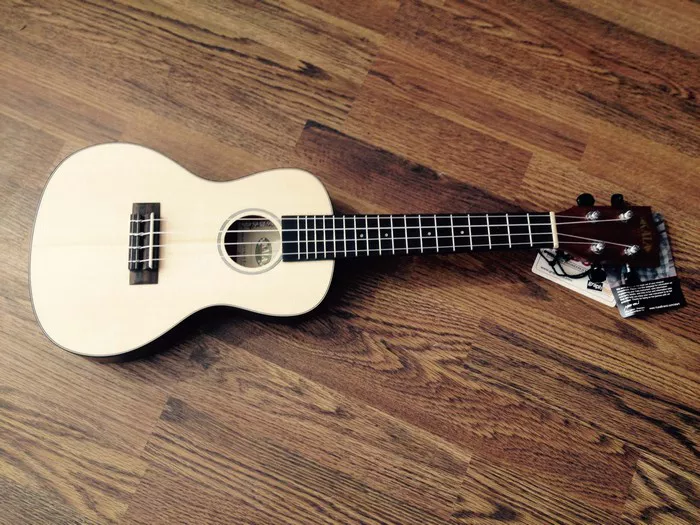The ukulele, with its charming and mellow tones, is a popular instrument that welcomes players of all skill levels. Learning different chords is a fundamental aspect of ukulele playing, and the Cm chord, or C minor, is a versatile and expressive chord that adds depth to your musical repertoire. In this comprehensive guide, we will walk you through the steps on how to play Cm on ukulele, offering insights into finger positioning, chord variations, and practical tips for mastering this essential chord.
Understanding the Cm Chord Structure
Before diving into the practical aspects, let’s understand the structure of the Cm chord. The Cm chord consists of three notes: C, Eb (E flat), and G. To play Cm on the ukulele, you’ll need to position your fingers on the corresponding frets of the strings.
Basic Cm Chord Positioning: A Step-by-Step Guide
Start with an Open C Chord: Begin by playing an open C chord. Place your third finger on the third fret of the first (A) string, creating a C major chord.
1. Add the Minor Third: To turn the C major chord into a C minor chord (Cm), lift your third finger and place your first finger on the first fret of the first (A) string. This fret is where the minor third (Eb) is located.
2. Check Your Fingering: Ensure that your fingers are positioned accurately, and each string rings clearly. Strum the strings one by one to confirm that you’re producing the correct notes – C, Eb, G.
3. Adjust as Needed: If any notes sound muted or buzzing, adjust the positioning of your fingers accordingly. Achieving a clean sound is crucial for a well-played Cm chord.
Alternative Cm Chord Voicings: Expanding Your Chord Vocabulary
While the basic Cm chord is a great starting point, exploring alternative voicings can enhance your playing and provide versatility in different musical contexts. Here are two alternative Cm chord voicings:
1. Barre Chord Cm:
Place your index finger across all four strings on the third fret, creating a barre.
Add your third finger to the fifth fret of the fourth (G) string.
Strum the strings from the third (A) string onward.
This barre chord shape allows you to move the Cm chord to different positions on the fretboard.
2. A Shape Cm Chord:
Place your ring finger on the fifth fret of the first (A) string.
Add your middle finger to the fourth fret of the third (C) string.
Strum the strings from the third (C) string onward.
This voicing provides a distinct and melodic quality to the Cm chord.
Practice Tips for Mastering the Cm Chord
Here are practice tips for mastering the Cm chord:
1. Isolate the Chord: Spend dedicated practice time focusing solely on the Cm chord. Strum it slowly and deliberately, ensuring each note rings out clearly.
2. Chord Transitions: Practice transitioning between the Cm chord and other chords in your repertoire. Smooth transitions between chords are essential for fluid playing.
3. Use a Metronome: Incorporate a metronome into your practice routine to develop a steady sense of timing. Start with a slow tempo and gradually increase as you become more comfortable.
4. Explore Strumming Patterns: Experiment with different strumming patterns to add variety to your playing. Consider trying both downstrokes and upstrokes to find a pattern that complements the mood of the music you’re playing.
5. Incorporate Cm into Songs: Find songs that feature the Cm chord and practice playing them. This practical application helps reinforce your understanding of the chord in a musical context.
6. Play Along with Backing Tracks: Playing along with backing tracks or songs that include the Cm chord allows you to experience how it fits into a broader musical arrangement.
Common Challenges and Solutions:
Here are common challenges and solutions:
1. Muted Strings: If you’re experiencing muted strings, check your finger positioning. Ensure that your fingers are placed close to the frets and press down firmly.
2. Buzzing Sound: Buzzing sounds may indicate that your fingers are not pressing down on the strings with enough pressure. Apply more pressure and check your finger placement.
3. Difficulty with Barre Chord: Barre chords can be challenging for beginners. Practice partial barre chords on the lower frets and gradually work your way up to full barre chords as your strength and dexterity improve.
4. Struggling with Transitions: If you find transitioning between chords challenging, isolate the chord change and practice it repeatedly. Slow down the tempo and gradually increase speed as you become more comfortable.
See Also: Which Ukulele Is Closest To Guitar: Finding the Closest Match
Conclusion: Musical Expression with Cm on Ukulele
In conclusion, mastering the Cm chord on the ukulele opens up a world of musical possibilities, adding depth and emotion to your playing. Whether you’re a beginner exploring your first chords or an experienced player seeking new voicings, the Cm chord offers a rich palette for musical expression. With dedicated practice, thoughtful exploration of alternative voicings, and a focus on clean and precise playing, you’ll find that the Cm chord becomes a valuable tool in your ukulele repertoire, enhancing your musical journey with its unique and evocative sound.


